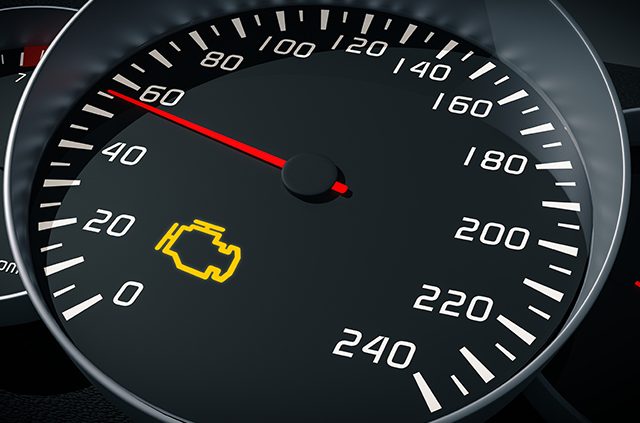Why Is Your Check Engine Light On?

The orange, engine-shaped icon that sometimes appears in your car’s instrument cluster isn’t just an annoyance, it’s also a sign that something needs your attention under the hood! Ignoring it could leave you stranded on the highway and/or cost you thousands of dollars in repairs.
Below are the 6 most common problems that can trigger a check engine light.
Oxygen Sensor Failure
The oxygen sensor measures the amount of unburnt oxygen in a car’s exhaust system. It sends data to the vehicle’s computer, which uses it to regulate the mixture of air and fuel that enters the cylinders. A car will keep running even if an O2 sensor needs to be replaced, but it will burn more fuel than usual.
On average, a quality O2 sensor will set you back about $175, however the cost of labor will vary greatly depending on the vehicle’s make and model.
A Loose Gas Cap
A loose gas cap is one of the most common reasons why your check engine light may be on. The cap is a crucial part of a car’s fuel-delivery system. It notably prevents gasoline fumes from leaving the fuel tank, and it helps keep the whole system under the correct pressure. If your check engine light turns on immediately after a fill-up, pull over and tighten the cap.
Catalytic Converter Failure
A catalytic converter is integrated into a vehicle’s exhaust system. It turns the carbon monoxide generated during the combustion process into carbon dioxide. It’s a fairly simple part, and its failure can often be prevented. Performing regular maintenance on time is key to keeping your car’s catalytic converter in working order
Mass Airflow Sensor Failure
The mass airflow (MAF) sensor monitors how much air enters the engine. It’s a part of the engine-management system, and your car can’t adjust to changes in altitude without it. Symptoms of an MAF failure include a rough idle, trouble starting and a sudden change in the position of the throttle pedal. Reduced gas mileage and stalling can also indicate an MAF problem.
Vacuum Leak
Vacuum hoses can dry out and crack as they age, especially if they’re exposed to intense heat like Phoenix or extreme cold like Alaska. This is the most common cause of vacuum leaks. Other common issues include cracked fittings and loose connections. Vacuum lines cost just a few dollars each, but tracing the source of the leak can be time-consuming, and expensive if you’re not performing the work yourself.
Dead Battery
The battery is as simple as it is important; without it, your car won’t start.
Changing or charging a battery on your own is a relatively easy task, but keep in mind that in some late-model cars, it’s buried under plastic covers, and might be a little difficult to access.
Not sure how to check any of the above mentioned items yourself? Our Service Department at LeSueuer Car Company can help! To schedule an appointment, please click here!